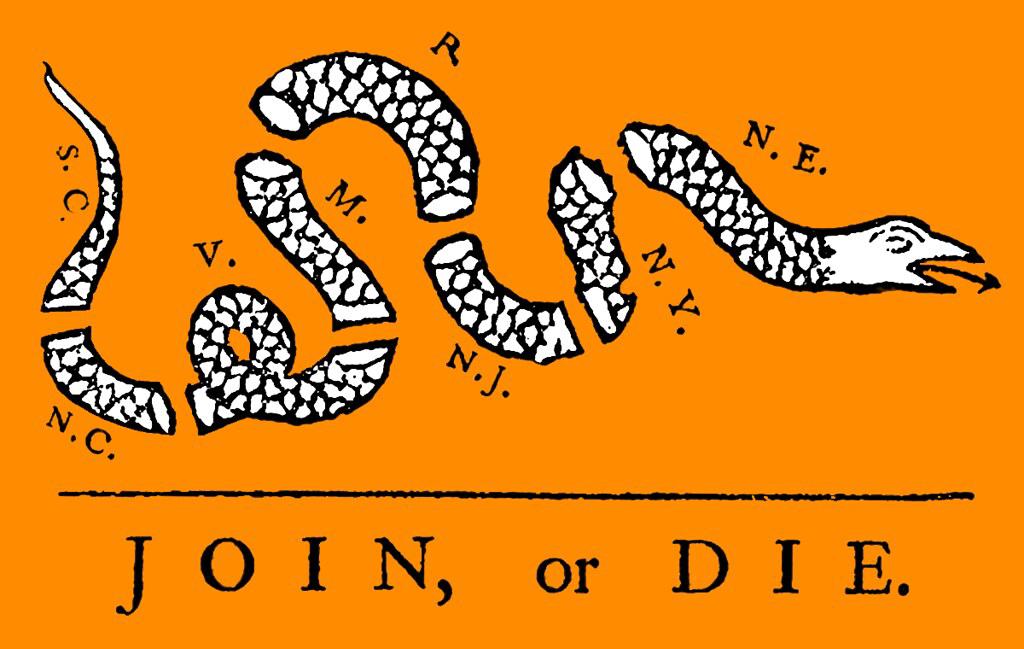Historical Influence of Political Cartoons
Political cartoons have shaped public opinion and sparked dialogue on key issues since Benjamin Franklin's time. These satirical drawings, initially seen on street corners and later in newspapers, gained popularity for their ability to convey complex ideas swiftly and memorably.
During pivotal moments, cartoons reflected societal tensions and debates:
- Franklin's "Join or Die" illustration called for colonial unity against France during the French and Indian War.
- Later cartoons captured public ire over Britain's tax policies, vividly portraying scenes like Bostonians tarring an excise collector.
- The Bank Wars of the 1830s found expression through cartoons depicting President Andrew Jackson's actions against the Second Bank.
- Thomas Nast used his pen to challenge societal norms and advocate for civil rights, promoting unity in post-Civil War America.
In the 20th century, cartoons continued to capture snapshots of societal issues, from World War I tensions to the space race. They offer a unique vantage point, allowing the public to see leaders and policies stripped bare, steering conversations with cleverly drawn lines.
By translating complex political ideas into digestible visuals, cartoons connect our historical legacy, reminding us of our past, challenging current ideologies, and shaping our collective outlook.

Techniques and Persuasive Power
Political cartoonists employ techniques like symbolism, exaggeration, and irony to impact public perception and spark conversation. These methods distill complex issues into powerful visuals that resonate with audiences.
Symbolism uses simple objects to represent larger ideas. Uncle Sam, for instance, personifies American ideals and national policy.
Exaggeration magnifies certain features to amplify a point, tapping into the human tendency to notice and remember extremes. During the Bank Wars, Andrew Jackson was often depicted with exaggerated features to emphasize perceived overreach of authority.
Irony challenges viewers' preconceptions by using incongruity between reality and expectation. A cartoon might show a bureaucrat tangled in red tape of his own making, an ironic jab at inefficient governance.
These techniques tap into emotional and cognitive responses simultaneously, encouraging viewers not just to see a message but to feel it. As political cartoons evolve with digital media, these age-old techniques prove adaptable, adeptly cutting through the noise of rapid information exchange.
Role in Modern Media and Society
In today's media-laden landscape, political cartoons bridge traditional commentary with modern platforms. Their concise nature suits platforms where attention spans are dwindling, allowing impactful blends of image and minimal text to convey messages quickly.
Political cartoons reach across generational divides, engaging both older audiences familiar with traditional media and younger generations who primarily consume content online. Their visual stories transcend language barriers and literacy levels, making them accessible to a broad audience.
As social equalizers in discourse, cartoons grant the public a means to critique authority and hold power to account. They offer a quiet yet effective form of dissent or support that can amplify undercurrents of public sentiment.
Today's cartoonists skillfully handle the blurry line between humor and critique, addressing contentious issues while sidestepping outright censorship. By couching criticism in satire and humor, cartoons can often tread where other forms of media might hesitate.
As they adapt to the digital age, political cartoons continue to critique, entertain, and provoke thought, cementing their place in the evolving landscape of political and social commentary.
Notable Cartoonists and Their Legacy
Thomas Nast elevated political cartooning to a cornerstone of American social commentary. His work against Boss Tweed and the Tammany Hall political machine went beyond mere satire, igniting public outrage and contributing to the downfall of the Tweed Ring. Nast's renditions of symbols like Uncle Sam and Santa Claus have permeated American consciousness, shaping national iconography.
Herblock (Herbert Block) earned acclaim for his relentless pursuit of social justice themes, particularly his criticism of McCarthyism and the Watergate scandal. His work exemplified the cartoonist's role as a moral compass, informing public debate through incisive visual commentary.
Bill Mauldin left an indelible mark during World War II with his poignant depictions of soldiers' daily struggles. His cartoons captured the gritty reality of war with empathy and humor, resonating with both troops and civilians.
"Everything you see here is an original. There's not one thing here that was a copy of or duplicate."– Bob Newton, collector of political cartoons
These cartoonists wielded their pens as powerful tools for change, bringing attention to societal injustices and political follies. They not only entertained but also informed, provoked, and inspired, shaping political discourse and fostering a more engaged citizenry.
Today, their influence persists as modern cartoonists handle a rapidly changing media environment, continuing to spark dialogue and encourage democratic engagement.
Challenges and Future of Political Cartoons
In the digital age, political cartoons face challenges that threaten their traditional platforms and influence:
- Censorship takes on new forms online, with social media platforms wielding significant control over content visibility.
- Algorithms and policy updates can inadvertently suppress certain political messages.
- The financial decline of print newspapers poses another challenge, making it difficult for cartoonists to secure the same level of public visibility and impact.
- Many confront an uncertain economic future, adapting to new monetization models like crowdfunding and subscription services.
The sheer volume of online content creates a competitive space for attention, making it harder for individual messages to gain traction. This saturation can lead to fragmentation, diluting the cohesive call to action that political cartoons historically inspired.
Despite these challenges, the digital age offers opportunities for creativity and audience engagement. Cartoonists can incorporate multimedia techniques to create more immersive experiences, attracting new audiences. The digital space also allows direct connection with audiences, bypassing traditional intermediaries and fostering more intimate relationships.
As political cartoons evolve alongside digital platforms, they must embrace innovation and seek new avenues of engagement. By leveraging digital technology and nurturing direct relationships with audiences, political cartoonists can continue to play an essential role in cultural and political storytelling.

Political cartoons, with their blend of art and commentary, continue to play a significant role in shaping public discourse. They remain a vital part of our cultural and political conversations, offering insights that challenge and engage us. As we move forward, these illustrations will persist in capturing the essence of societal issues, encouraging reflection and dialogue.
- Keller M. The Art and Politics of Thomas Nast. Oxford University Press; 1968.
- Douglass F. Our Composite Nationality. [Speech]. Boston, MA; 1869.
- King ML Jr. I Have a Dream. [Speech]. Washington, DC; 1963.





















